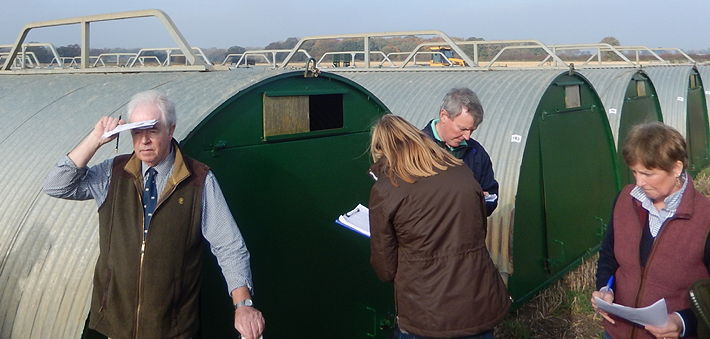More questions than answers at the moment for the pig industry, with some very negative signals as far as Brexit is concerned, not to mention the recent shock news of the first African Swine Fever outbreak in Germany.
Although this was found in a wild boar rather than on a commercial farm, this is reported to be the first case of the virus appearing in Germany, who are big players throughout the EU as far as pig production is concerned and who are also exporters of significant quantities of pigmeat to the East. This could play havoc with EU and global pig and cull sow prices and the latest ASF reports from Germany are indicating that some pig prices could be hit by up to approximately 20 cents.
Domestic pig prices are also continuing their recent decline, dropping 1.27p this week to stand at 161.11p and although UK prices are still around 6p higher than they were this time last year, EU pig values have dropped by 16% over the same period, putting further downward pressure on the domestic market.
UK contribution prices are continuing their bearish trend and are expected to shed another copper or so when announced later today, with most between 149p and 155p depending on who you are and where you are.
The spot market is virtually non-existent as fresh meat abattoirs have more than enough pigs already in the system and those buyers unlucky enough to have to move extra pigs via the spot market may find it difficult to secure bids of more than 150p for one-off loads of spot pigs.
Probably the only positive note of the day, assuming space is available, was that cull sow prices had gone up 2p due almost entirely to a significant fall in the value of the pound due to concerns over the viability of the UK economy as a whole in the months ahead. The value of the Euro has surged from 89.1p a week ago to 92.8p on Friday and as a result, cull sow prices tended to be in the 55p region +/- according to load size.
However, the latest ASF news could kick all the above prices into touch.
Weaner prices generally tend to track the SPP and with this on a downward slope, it is no surprise to see that the 7kg AHDB average has dropped from £42.47 to £41.58.
Once again, no 30kg average has been published but pigs in this category have generally traded in and around the £55-£59 range for Red Tractor and on the top side of £60 for RSPCA Assured.
Some breeders are reporting ongoing challenges with disease which may cut back numbers of finished pigs available towards the end of the year but with feed prices also on the rise it is hardly surprising that weaner buyers are remaining fairly cautious when it comes to price.
Feed costs are also heading north at a fairly significant rate and the latest UK wheat prices have moved higher following poor harvest yields and EU wheat prices have also generally followed an upward track.
On the futures markets, feed wheat has bounced up to £180/t for October and £154/t for September next year.
On a comparative basis, barley at £139/t for October looks better value.
Hipro soya prices have also moved higher quoted at £323/t for October-April ’21 and £310 for May-October ’21 and the rise in protein values is to some extent put down to stronger demand from China.
And finally, as reported above, concern is rising in connection with the German AFS outbreak and the lack of any significant direction as far as UK Brexit discussions are concerned.
The NPA are reporting great concern over the future of live breeding pig exports to the EU, which has been a useful outlet up to now and there could be further ongoing implications that have to be agreed by October 15, which could hit live pig breeding exports hard in the absence of having any functioning Border Control Posts for vehicle inspections.
According to the British Meat Processors Association, red meat exports could also be hit by the lack of up and running cross border trade systems and controls.
STOP PRESS: Until further news is released over the effects of the German ASF outbreak it is difficult to predict what effect this will have on UK pig prices but currently reports are suggesting they will be negative as far as volumes and values are concerned.




